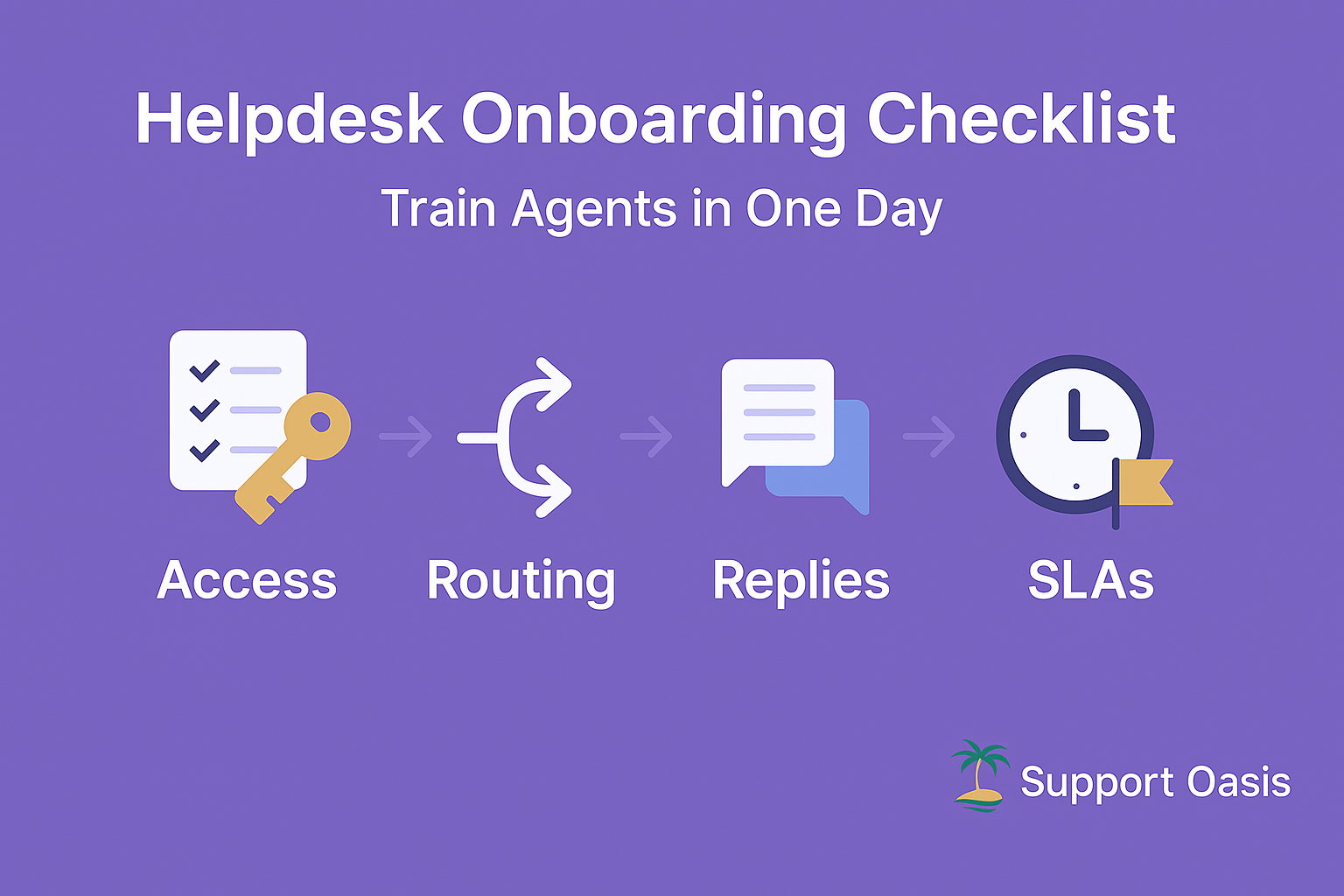A helpdesk onboarding checklist gives new agents a clear path from day one. As a result, you reduce ramp time, improve consistency, and protect response targets. In addition, a simple plan keeps training repeatable as your team grows.
Helpdesk Onboarding Checklist: Goals
First, define success. New agents should log in, work the queue safely, and know when to escalate. Therefore, your checklist must cover access, routing, replies, SLAs, and feedback. Finally, confirm who answers questions during the first week.
Agent onboarding outcomes
- Handle a basic ticket from intake to resolution.
- Apply routing rules and priorities correctly.
- Use saved replies without losing a human tone.
Before Day One: Prepare the Ground
First, create accounts and assign roles. Next, connect the support mailbox so tickets arrive in the queue. Then, add the agent to groups and views. Additionally, share key reading:
- Shared Inbox vs Helpdesk: Which Is Better for Small Teams?
- How to Set Up a Helpdesk for Your Small Team in One Day
Because clarity matters, set expectations for first response and handoffs. According to Harvard Business Review, faster, clearer communication drives customer loyalty.
Day One Plan: Step by Step
1) Accounts and access
First, verify login, MFA, and profile. Then, show where to see assigned tickets and team views.
2) Routing basics and priorities
Explain queues, categories, and tags. For practical rules, review Ticket Triage Rules: How Small Teams Route Emails Fast. Consequently, agents will assign owners and priorities the same way every time.
3) Saved replies with a human touch
Introduce templates and placeholders. For examples, see Helpdesk Saved Replies: 15 Templates for Small Teams. In addition, remind agents to personalize the first line.
4) SLA targets and timers
Define first response and resolution targets. Therefore, agents know what is urgent, what can wait, and when to escalate.
5) Shadow, then switch seats
Start with observation for three tickets. Next, have the agent write drafts while a senior reviews. Finally, let them send two low-risk replies.
6) Close the loop
End the day with a 10-minute review. Because feedback is fresh, you can correct small issues before they grow.
The One-Week Follow-Up
First, schedule a daily stand-up for quick questions. Next, add one new responsibility each day, such as tagging or refunds. Meanwhile, track first response, reopen rate, and backlog. By Friday, run a short quiz or ticket audit to confirm learning.
Copy-Ready Helpdesk Onboarding Checklist
- Access: login, MFA, roles, views.
- Tools: mailbox connection, notifications, shortcuts.
- Routing: categories, tags, priorities, owner pools.
- Replies: tone guide, saved replies, personalization.
- SLAs: targets, timers, escalation path.
- Quality: internal notes, handoff steps, audit checklist.
- Metrics: first response, resolution time, reopen rate.
- Support: who to ping, when to escalate, how to summarize.
Common Mistakes and Quick Fixes
- Training only by lecture. Instead, use shadowing and drills.
- Too many rules at once. Start simple, then expand weekly.
- No feedback loop. Add a daily five-minute review with two wins and one fix.
- Missing targets. Publish SLA examples in the onboarding doc.
Final Thoughts
A reliable helpdesk onboarding checklist turns day-one chaos into a calm, repeatable process. Because the steps are clear, new agents contribute faster, stay consistent, and know when to ask for help. In conclusion, keep the plan simple, measure results, and improve it every month.
Ready to onboard faster?
Try Support Oasis for free to launch email ticketing, routing, saved replies, and SLAs in minutes. Try for free or learn more about Support Oasis.
